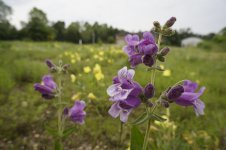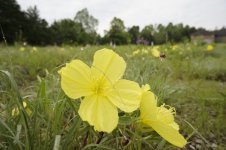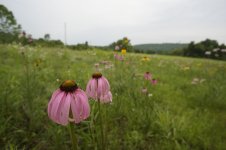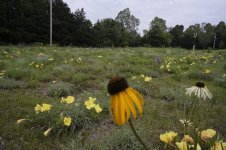jeffinsgf
Veteran Member
I've got a difficult piece of this earth. My ten acres is underpinned by limestone that, in some ancient time, was an elaborate coral reef. In places the soil is deep and reasonably fertile. 2 feet away a chunk of limestone will break the surface, and an attempt to unearth it will reveal that it is tied directly to the earth's core. It is, what the geologists call a "glade", bedrock exposed or nearly exposed in large areas. Needless to say, this makes the concept of "yard" a tough one to bring to fruition. I battled that dragon successfully for about an acre right around the house, but grew weary of mowing the patches of grass that covered the 4 acres between the house and the road. Even at it's best it was boring, like every other wide expanse of mono-cultured lawn. At it's worst it was patchy, weed-prone and brown through most of the summer. Eight years ago I called in the Missouri Department of Conservation to look at my 5-acre woods and give me some advice on thinning and maintaining it. We talked for a brief while about the woods, but the agent was much more interested in my open field. He suggested I kill the fescue that had been planted decades ago and sow the area with native grasses and wildflowers, plants naturally adapted to the whims of weather that we have here in the Ozarks...soggy one year and powder dry the next. What followed was a few months of break-in for my new tractor; grading, raking, discing and sowing. Since then the area requires my attention just once a year in the late fall when I burn it off. The first few years were disappointing, but I was ready for it, having been warned by the Conservation agent. The last few have been increasingly rewarding, and this spring cool temperatures and ample rain have worked in concert to create quite a show.
Here are a few photos I snapped this morning, after a heavy dew and just before yet another rain.




Here are a few photos I snapped this morning, after a heavy dew and just before yet another rain.



